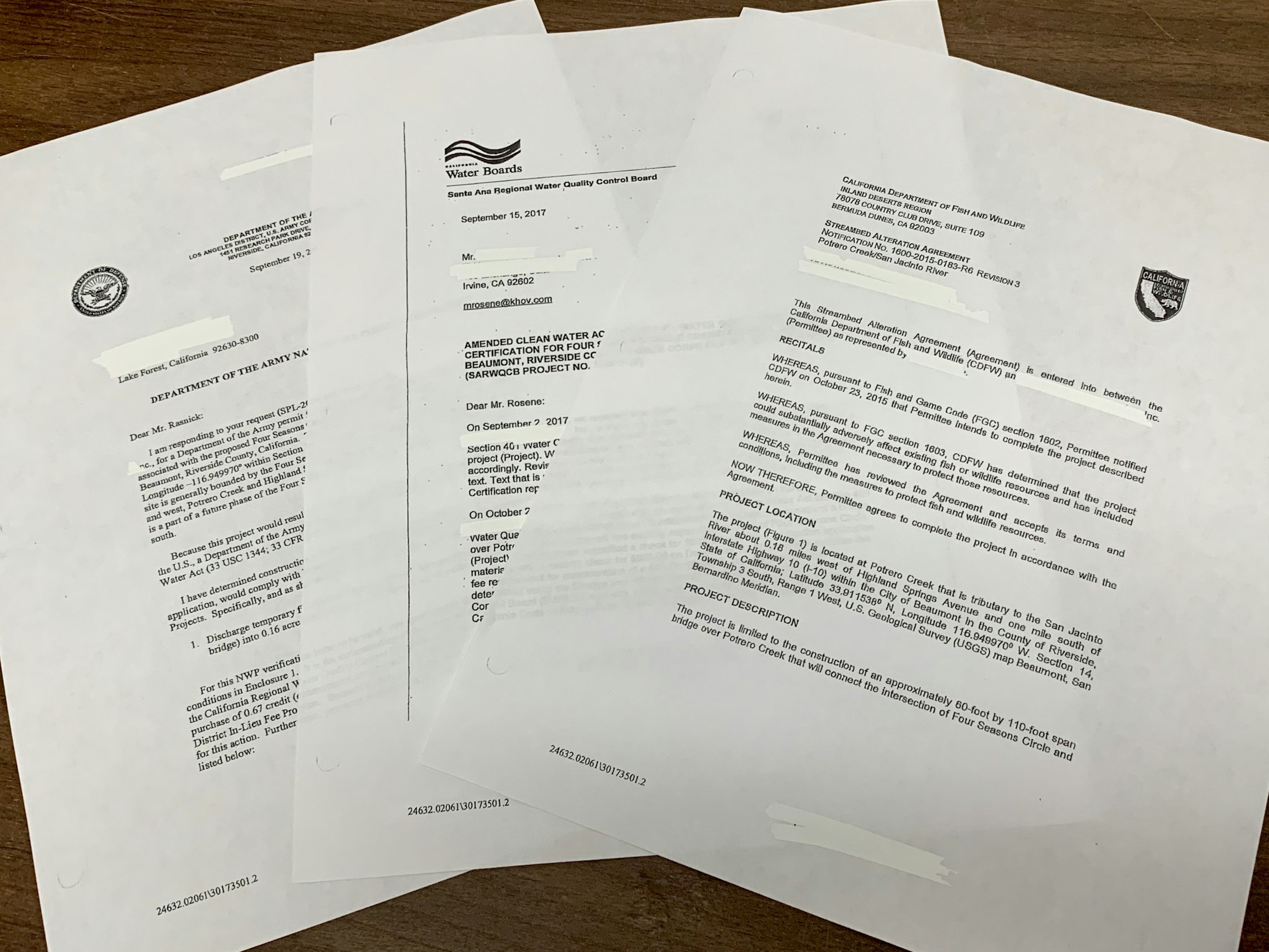Permittee Responsible Mitigation
Permittee responsible mitigation is mitigation for loss of habitat due to land development where the permittee remains responsible for the project until it meets it’s success criteria for sign off. The Riverside-Corona Resource Conservation District (RCRCD) works with the permittee to develop and implement a project that meets the requirements of their permits with the regulatory agencies requiring mitigation. This involves selecting a mitigation site, writing a habitat mitigation and monitoring plan for the mitigation project, implementing the plan, and managing and conserving the mitigation site in perpetuity through site protections and a non-wasting endowment. While more involvement is required from a permittee for this mitigation method, it can sometimes be a preferable choice if they have land to donate for the mitigation site or are looking for a more tailored solution to their mitigation needs.
Permits
The RCRCD works with cooperating landowners and the community to conserve land. Numerous agencies collaborate to permit, fund, and monitor the restoration work that is completed on conservation lands:
- Army Corps of Engineers (404 or Nationwide permits)
- California Department of Fish and Wildlife (1600 Permits)
- Santa Ana Regional Water Quality Control Board (401 Permits)
- US Fish and Wildlife Service (Biological Opinion)

These regulatory agencies review plans and proposed actions that might impact waterways and habitat. For example, it’s essential that sensitive birds are not disturbed during breeding and nesting season. Therefore, no work is permitted in waterways during spring and into summer.
Counties and cities also have plans and ordinances that are designed to protect wildlife and water quality. There are special requirements for building near waterways to prevent encroachment and limit stream alteration.


